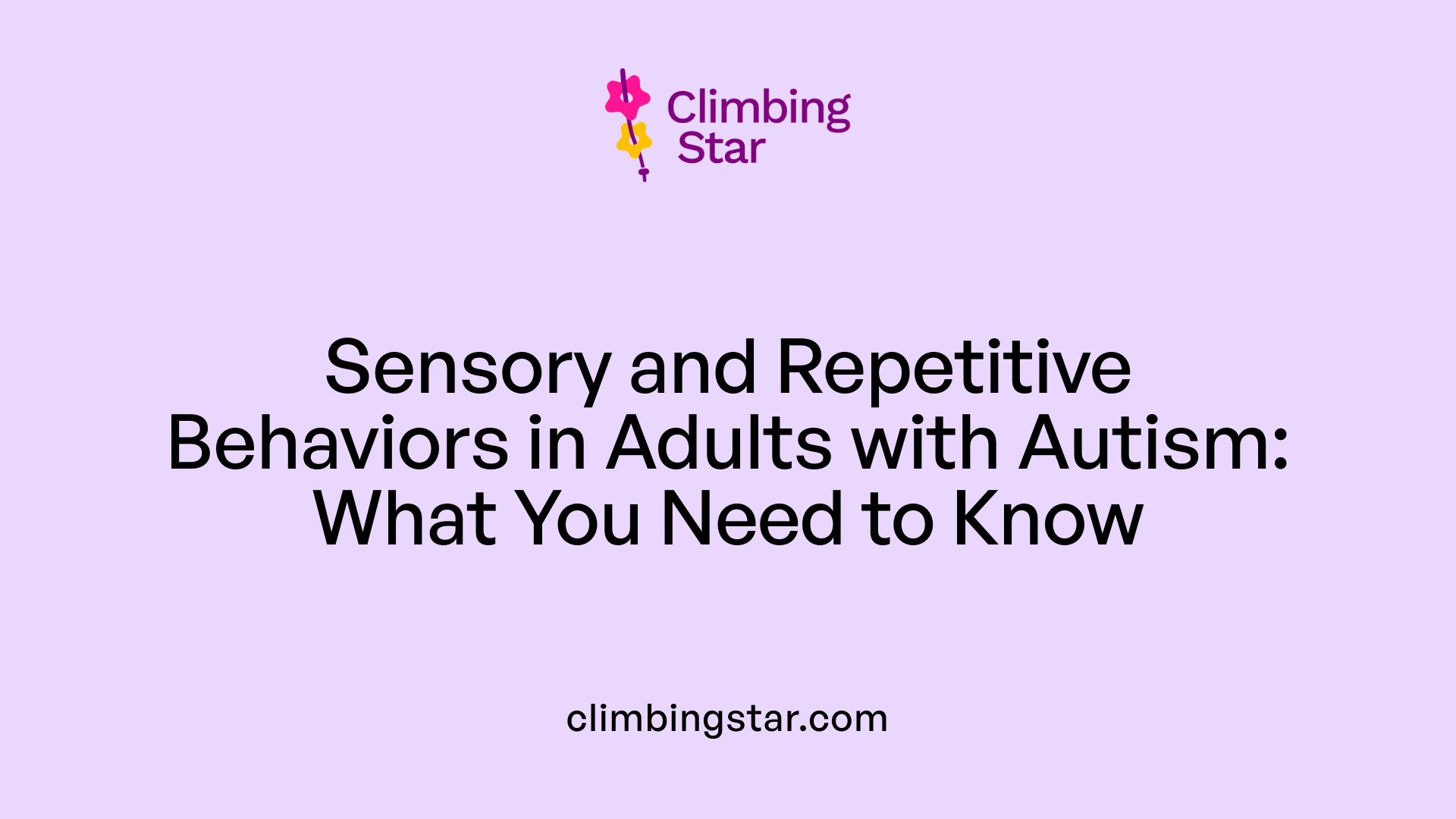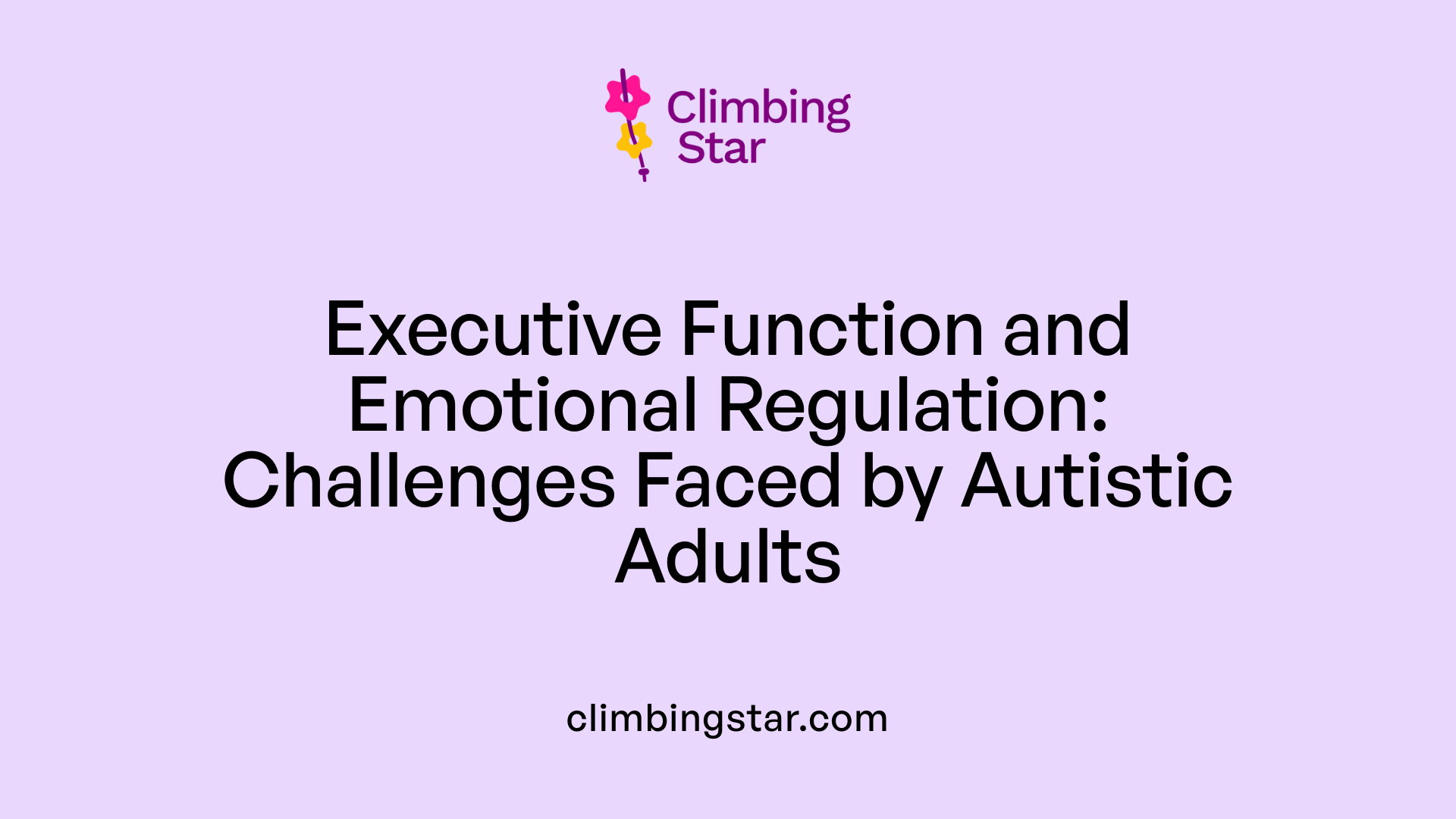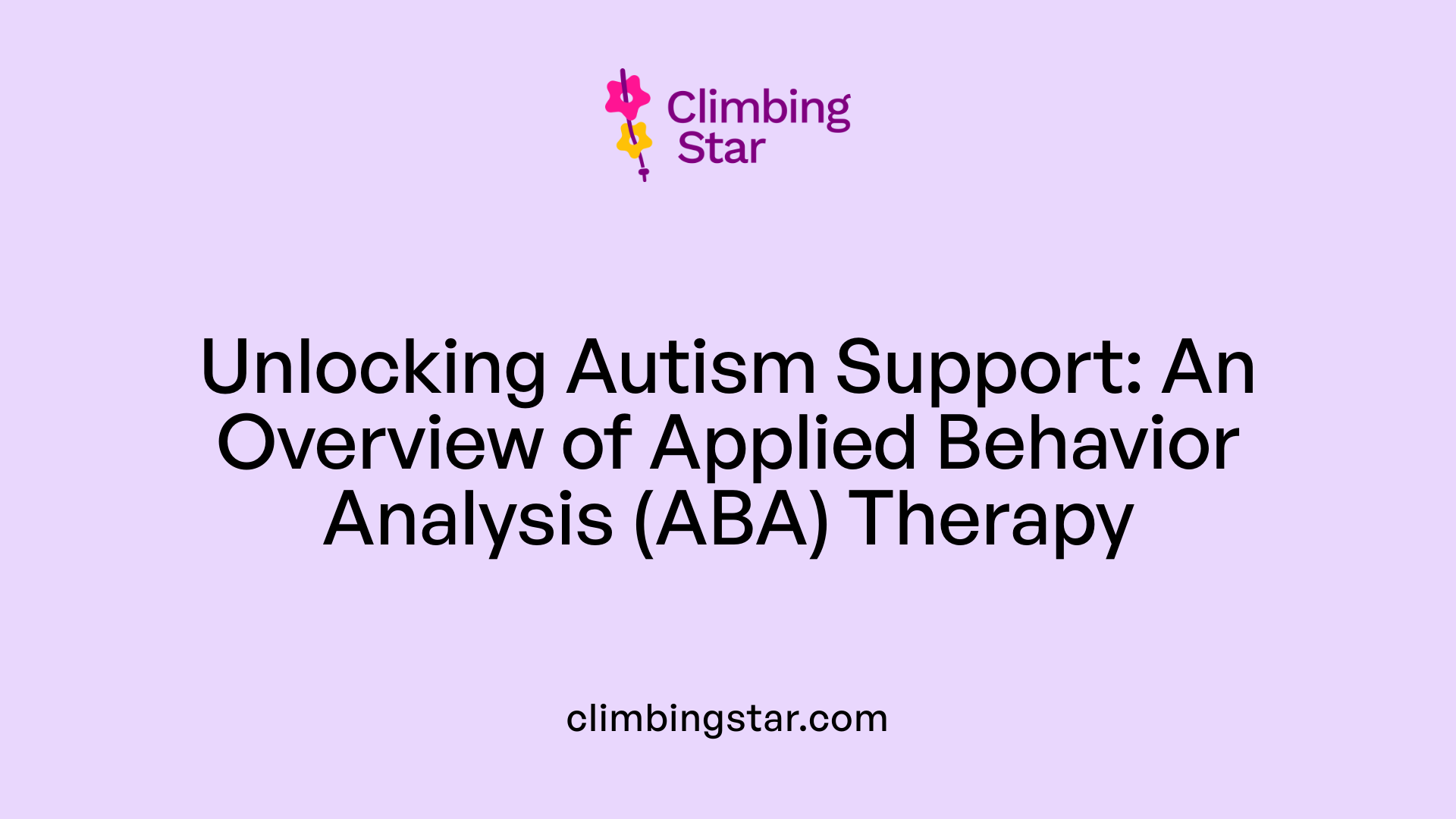Understanding Autism in Adults
Autism Spectrum Disorder (ASD) is a lifelong neurodevelopmental condition affecting social communication, behavior, and sensory processing. While often diagnosed in childhood, many adults remain undiagnosed or receive a diagnosis later in life. Recognizing the common signs and symptoms of autism in adults is essential for understanding their experiences and accessing appropriate support. This article explores the core features of autism in adulthood, typical challenges, and therapeutic approaches such as Applied Behavior Analysis (ABA) therapy, which can help manage symptoms and improve quality of life.
Core Social Communication Challenges in Autistic Adults
What are common social communication difficulties experienced by autistic adults?
Autistic adults often face significant challenges in social communication. A primary difficulty is understanding others' thoughts and feelings, which can make social interactions confusing and overwhelming. This challenge may lead to social anxiety and a preference for solitude, as engaging with others can feel exhausting or intimidating.
Many autistic adults have trouble interpreting nonverbal cues such as facial expressions, body language, and tone of voice. This can make it hard to grasp the emotional context of conversations or to respond appropriately. Consequently, they might have difficulty maintaining conversations, often struggling to start or keep the exchange flowing naturally.
Additionally, autistic individuals commonly interpret language literally. This means sarcasm, idiomatic phrases, and implied meanings can be confusing. Such misunderstandings can contribute to social missteps or the perception that they are blunt, rude, or uninterested, even though this is unintentional.
These communication hurdles often require autistic adults to find coping strategies or receive support to navigate social situations more comfortably. Understanding these difficulties is essential for fostering empathy and effective communication.
| Challenge | Description | Impact on Social Interaction |
|---|---|---|
| Difficulty understanding thoughts and feelings | Trouble grasping others' emotions and perspectives | Leads to social misunderstandings and isolation |
| Social anxiety and solitude preference | Nervousness in social settings prompts avoidance | Limits social engagement and opportunity for friendships |
| Interpreting nonverbal cues | Challenges reading body language, facial expressions, and tone | Misreading emotions, awkward interactions |
| Difficulty maintaining conversations | Struggles with conversational flow and topic changes | Reduced communication effectiveness |
| Literal interpretation of language | Misunderstanding sarcasm or idioms | Perceived bluntness or disinterest |
Repetitive Behaviors and Sensory Sensitivities in Adults with Autism

What repetitive behaviors and sensory issues are typical in autistic adults?
Adults with autism spectrum disorder often show repetitive movements and speech patterns, sometimes called stimming. This can include hand rubbing, rocking, or repeating certain sounds or phrases. These behaviors help with self-regulation and managing feelings.
A strong preference for routine and sameness is common. When routines change unexpectedly, autistic adults may feel anxious, stressed, or distressed. Predictability in daily activities is important to help reduce these feelings.
Sensory sensitivities also frequently affect adults on the spectrum. They may have heightened responses to sounds, touch, or visual stimuli like bright lights. For example, loud noises or crowded environments might feel overwhelming, leading to avoidance or distress.
Many autistic adults develop intense interests or hobbies, focusing deeply on specific subjects or activities. These passions can provide comfort and serve as a positive outlet for energy and attention.
Attention to detail is another trait often seen, with meticulous planning of activities and environments helping to create a sense of control and stability. This careful organization supports managing sensory and social challenges effectively.
Understanding Executive Function and Emotional Regulation Challenges

How do executive functioning challenges affect autistic adults?
Executive function difficulties are common among autistic adults, influencing their ability to plan, organize, and maintain attention. These skills are essential for managing daily responsibilities and fulfilling social roles effectively.
Many autistic individuals find it challenging to regulate their thoughts and actions, which impacts self-control and the ability to adapt to unexpected changes or social expectations.
Such struggles can increase anxiety and make it harder for adults on the spectrum to set and follow through on personal goals without tailored support.
Support often involves creating structured routines, using clear plans, and helping break down complex tasks into manageable steps. These approaches aid in improving independence and reducing stress related to executive functioning challenges.
By understanding and addressing these difficulties, caregivers and professionals can provide targeted assistance that fosters better daily management and emotional regulation in autistic adults.
Unique Considerations: Autism Presentation in Women and Masking Behaviors

How do autism signs differ in adult women, and what is masking?
Autism in adult women often looks different compared to men, with many women displaying more subtle symptoms. They might be quieter, less outwardly repetitive, and more skilled at navigating complex social interactions. Women with autism frequently hide their feelings and may be better at masking their differences to blend in with societal norms.
Masking, also known as camouflaging, involves consciously or unconsciously concealing autism traits to fit in socially. This can include imitating social behaviors, suppressing natural responses, and mimicking peers. While masking might help avoid social stigma or misunderstandings, it often takes a significant emotional toll.
The impact of masking is profound. It can lead to increased anxiety, stress, and burnout because sustaining a hidden identity requires continuous effort. This camouflaging behavior complicates diagnosis, as healthcare professionals may miss the subtler signs or misunderstand the person’s challenges, leading to delayed or missed diagnoses. Consequently, many autistic women do not receive timely or appropriate support, which can affect their mental health and quality of life.
Understanding these gender differences and the effects of masking is crucial for accurate diagnosis and tailored support for autistic women.
| Aspect | Description | Impact |
|---|---|---|
| Subtle Symptom Presentation | Quieter demeanor, less obvious repetitive behavior | Challenges in recognizing autism, often leads to missed diagnosis |
| Masking/Camouflaging | Hiding autism traits to fit societal expectations | Increased mental health issues like anxiety and depression |
| Diagnostic Challenges | Symptoms are less visible, social coping skills | Delays in diagnosis, lack of tailored interventions |
| Mental Health Consequences | Emotional exhaustion from masking | Higher rates of stress, burnout, and reduced well-being |
The Diagnostic Journey for Adults on the Autism Spectrum
How is autism diagnosed in adults?
Diagnosing autism in adults typically involves a thorough evaluation process conducted by trained professionals such as psychologists or psychiatrists. This evaluation includes detailed questionnaires and careful behavioral observations to assess social communication difficulties, sensory sensitivities, and restricted repetitive behaviors.
The diagnostic journey often starts with gathering a comprehensive developmental and medical history, sometimes incorporating input from caregivers or family members. Adults may be assessed for how symptoms affect their daily lives, including challenges with social interactions, understanding nonverbal cues, and managing changes in routine.
Because there is no definitive laboratory test for autism, diagnosis relies on clinical expertise and standardized observational tools. These assessments examine a range of behaviors and symptoms, paying close attention to social reciprocity, communication skills, sensory processing, and repetitive or ritualistic behaviors.
Typically, autism diagnosis occurs in early childhood, but many adults receive their diagnosis later, particularly if their symptoms were milder or masked. Understanding the nuanced presentation of autism in adults is vital to ensure accurate identification and access to tailored support and interventions.
Applied Behavior Analysis (ABA) Therapy: An Overview

What is Applied Behavior Analysis (ABA) therapy?
Applied Behavior Analysis (ABA) therapy is a scientifically supported method based on the principles of learning and behavior. It focuses on enhancing specific skills such as communication, social interactions, and academic performance while reducing behaviors that may interfere with daily functioning.
Definition and Principles of ABA Therapy
ABA therapy involves understanding how behaviors work, how they are affected by the environment, and how learning takes place. Therapists use this knowledge to develop personalized interventions that encourage positive behaviors through consistent and structured techniques.
Evidence-Based and Individualized Approach
This therapy is evidence-based, meaning its effectiveness is supported by research. Treatment plans are tailored to each individual's unique needs, strengths, and challenges, often involving close monitoring and adjustments based on progress.
Role of Positive Reinforcement and Data-Driven Methods
A cornerstone of ABA therapy is positive reinforcement, where desired behaviors are rewarded to increase their occurrence. Therapists collect detailed data on behavior patterns to inform decisions, ensuring interventions are effective and goals are met.
ABA therapy is widely used for individuals with autism spectrum disorder and can be applied across different environments such as homes, schools, and communities, helping improve overall quality of life.
How ABA Therapy Supports Autistic Adults
How does ABA therapy help individuals with autism?
ABA (Applied Behavior Analysis) therapy plays a vital role in supporting autistic adults by focusing on teaching new skills and reducing problematic behaviors. This therapy uses structured, personalized interventions tailored to each individual's specific needs.
ABA employs positive reinforcement techniques to encourage desirable behaviors while using detailed analysis to understand and modify challenging ones. The approach targets important areas such as communication, social interaction, regulation of emotions, and daily living skills.
These interventions can take place in a variety of settings including at home, in educational environments, or within community spaces. Techniques may range from discrete trial training—short, focused teaching sessions—to more naturalistic approaches that promote skills during everyday activities.
Ultimately, ABA therapy helps autistic adults improve their independence and enhances overall quality of life by building functional skills and easing social and behavioral challenges.
Professionals Delivering ABA and the Structure of Therapy Sessions

Who provides ABA therapy services and what is their training?
ABA therapy services are delivered by professionals with specialized training in behavior analysis and autism intervention. Key providers include Board Certified Behavior Analysts (BCBAs), who typically hold master's degrees in psychology, education, or related fields and complete rigorous supervised training along with certification exams. Registered Behavior Technicians (RBTs) also play an important role by implementing therapy under BCBA supervision. These therapists conduct detailed assessments to develop individualized treatment programs tailored to each person's unique needs.
What is the typical process involved in ABA therapy sessions?
ABA therapy sessions start with a comprehensive evaluation of the individual's current skills and challenges. Based on this, therapists design a personalized plan with clear goals. Sessions often take place in clinical settings, homes, or schools and focus on structured activities like discrete trial training and natural environment teaching. Therapists use prompts, positive reinforcement, and repetitive practice to build social, communication, and daily living skills. Reducing challenging behaviors, like aggression or anxiety, is also a priority. Sessions usually occur multiple times per week and are adjusted continuously based on data collected throughout therapy to ensure progress.
How are individualized programs developed?
Each ABA program is tailored through careful assessment of behavioral strengths and difficulties, interests, and environmental factors. Therapists collaborate with families and caregivers to set realistic, meaningful goals aligned with the individual's daily life. Continuous monitoring and flexibility allow programs to evolve with the person's changing needs.
What role does multidisciplinary collaboration play in ABA therapy?
ABA therapy is often part of a broader support system involving speech therapists, occupational therapists, and physical therapists. This multidisciplinary approach addresses the full range of challenges an individual with autism may face, ensuring that skills across communication, motor function, and sensory processing are supported cohesively. Collaboration helps create comprehensive care plans that promote overall development and quality of life.
Supporting Adults on the Autism Spectrum
Recognizing the signs and symptoms of autism in adults is crucial for timely diagnosis and access to effective interventions. Autism in adulthood encompasses a diverse range of social communication challenges, repetitive behaviors, sensory sensitivities, and executive functioning difficulties. Tailored therapies like ABA play a vital role in enhancing communication, social skills, and independence, improving overall quality of life. Awareness of gender differences, masking behaviors, and the diagnostic process helps destigmatize autism and supports adults in embracing their neurodiversity with confidence and appropriate resources.
References
- Signs of autism in adults
- Autism Symptoms and Diagnosis in Adults
- Autism symptoms
- Autism Spectrum Disorder (ASD) Symptoms & Causes
- Autism Spectrum Disorder - National Institute of Mental Health
- The Signs of Autism in Adults and the Types
- What Is Autism Spectrum Disorder?
- Autism spectrum disorder - Symptoms and causes
- Your Complete Guide to Becoming an ABA Therapist







